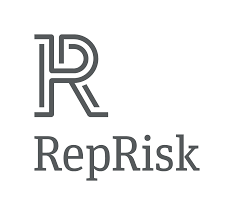RepRisk Launches First-of-its-kind Biodiversity Risk Tool, Finds 73% of Oil and Gas Projects Are Near Environmentally Sensitive Sites

- New dataset, RepRisk Geospatial, identifies proximity of extractive sector projects to Key Biodiversity Areas and protected areas
ESG data science firm RepRisk and the Integrated Biodiversity Assessment Tool (IBAT) Alliance have collaborated to unlock biodiversity insights via RepRisk Geospatial Analytics. An extension of RepRisk’s flagship product, the RepRisk ESG Risk Platform, Geospatial Analytics facilitates robust biodiversity risk assessment for market practitioners and solves common pitfalls around quality and availability of both biodiversity and proximity data.
RepRisk Geospatial provides powerful biodiversity due diligence data, showing the proximity of 60,000+ mining and oil and gas projects to 270,000+ protected areas and 16,000+ Key Biodiversity Areas – then rolling those insights up to project owner and operator companies. These insights provide useful information to market practitioners asking questions like, “does my client operate any pipelines near protected areas?” or “does the mine in my portfolio overlap with areas of high biodiversity value?”
See related articles: RepRisk & K2 Integrity Announce Partnership to Help Investment Managers Combat Greenwashing
“RepRisk Geospatial Analytics is ground-breaking for investors. It is essential to understand where companies own and operate assets before it is possible to understand the potential biodiversity related risk of an investment.” said Edward Ellis, Business Manager at IBAT Alliance. “RepRisk links assets on the ground to owner and operator companies, enabling investors to better understand aspects of their nature-related risk. When combined with the existing risk information in RepRisk’s ESG Risk Platform, investors are able to analyse biodiversity in the Environmental pillar of ESG in an even more multi-dimensional way.”
A preliminary analysis of RepRisk Geospatial Analytics reveals that:
- Approximately 32% of natural and mixed UNESCO World Heritage sites are currently within 1km of an extractive project.
- 52% (470 out of 900) of Alliance for Zero Extinction Sites, which are home to the last of some of the world’s most threatened species, are within 10km of an extractive project.
- Approximately 8,400 or 81% of Oil and Gas pipelines worldwide are within 10 km of at least one environmentally sensitive site.
RepRisk Geospatial is emerging alongside the Taskforce for Nature Related Financial Disclosures (TNFD)’s progress on a biodiversity risk management and reporting framework, to be adopted by financial institutions and corporates. “The TNFD has made it clear: geospatial data is essential for reporting on corporate biodiversity risk and moving toward a nature-positive economy,” says Alexandra Mihailescu Cichon, Executive Vice President of Sales and Marketing at RepRisk. “RepRisk Geospatial Analytics not only brings clients in step with emerging frameworks like TNFD but empowers them with the most cutting-edge technology and the world’s most comprehensive ESG dataset. Nature doesn’t disclose anything, and ultimately biodiversity risk and financial risk are one and the same. It’s time for financial markets to integrate biodiversity risk considerations into their decision-making processes.”
Source: RepRisk










